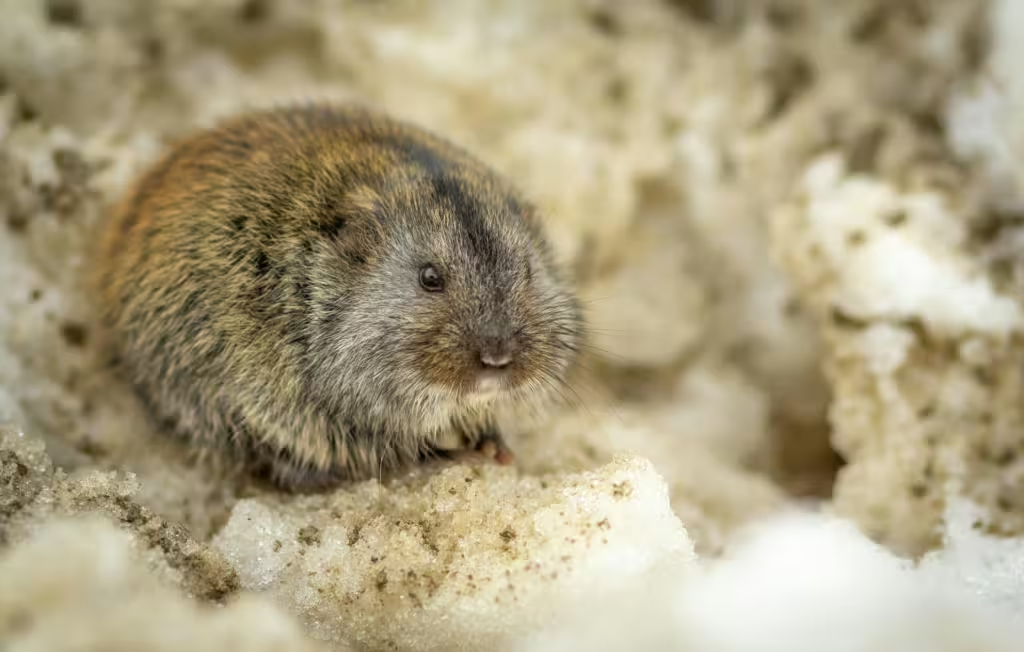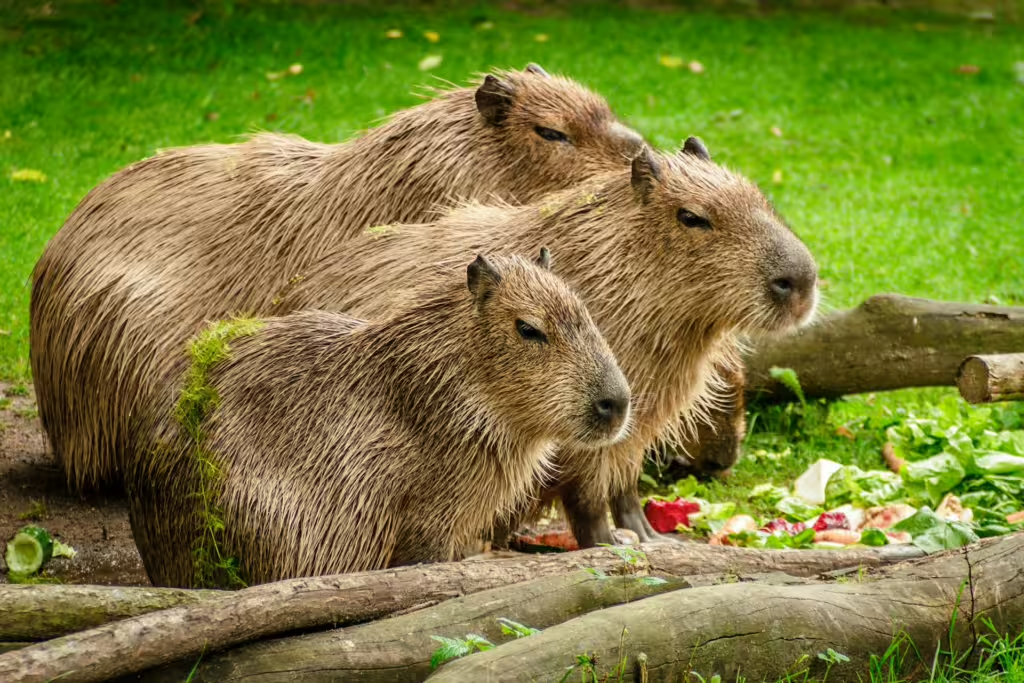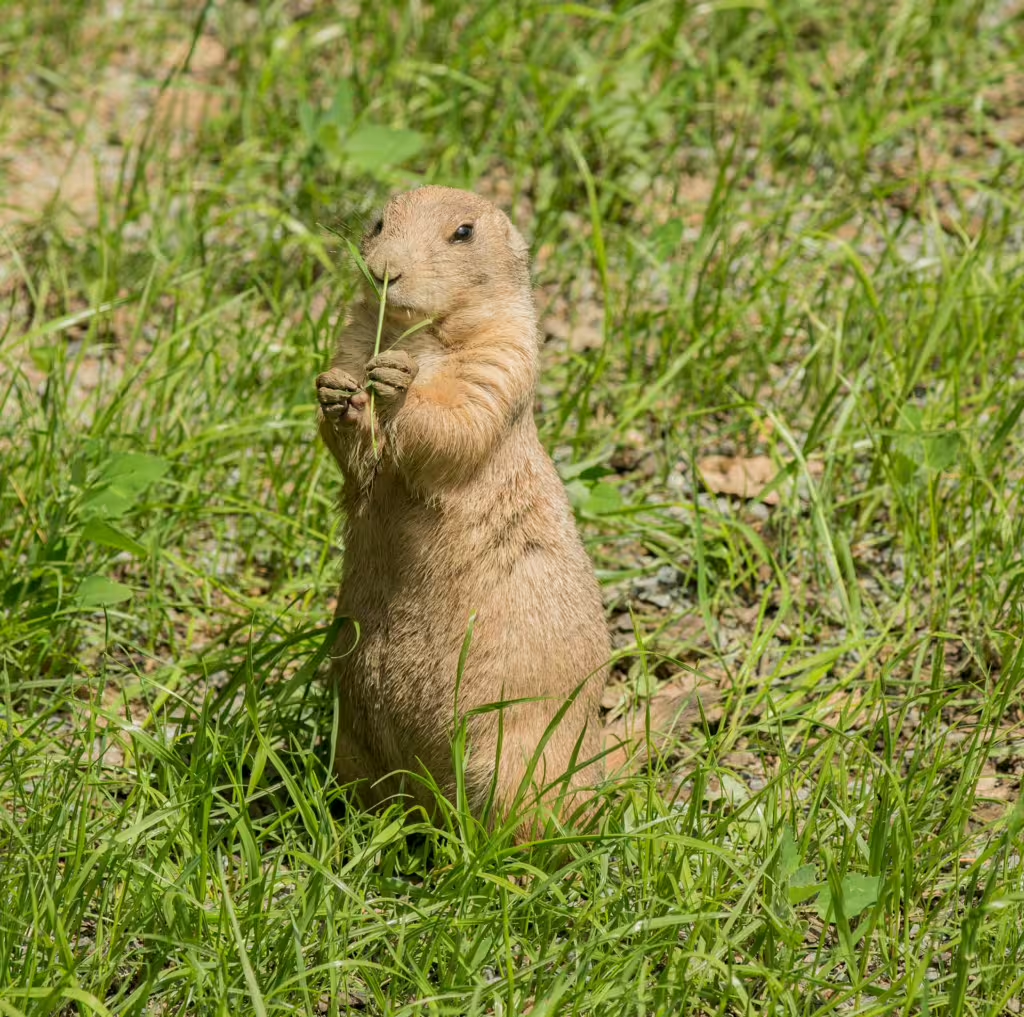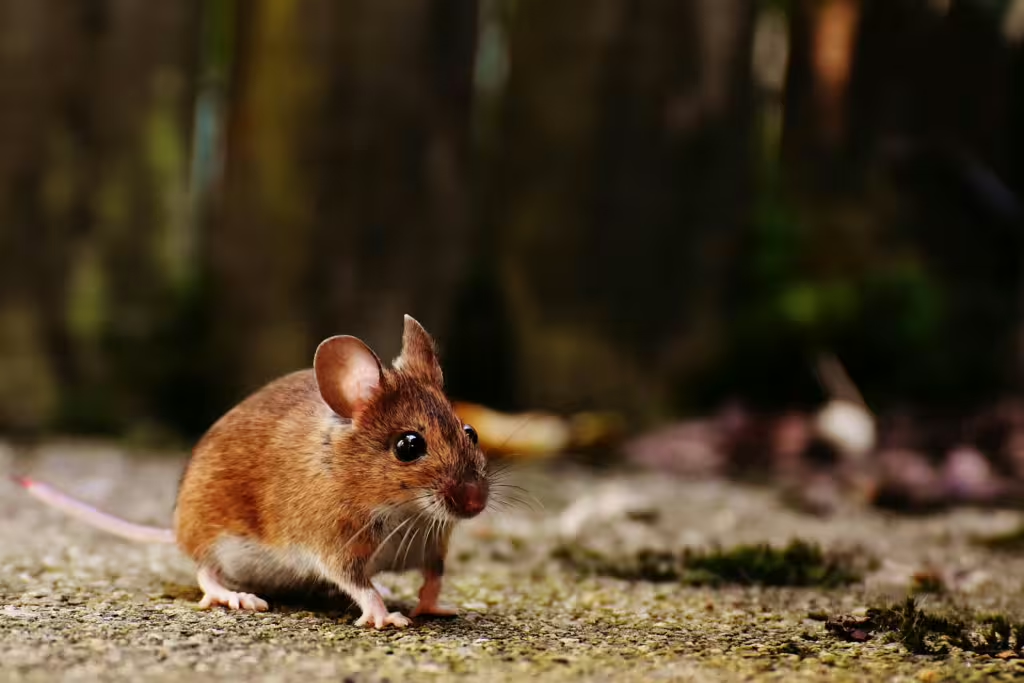It’s safe to say that humanity has had something of a complicated relationship with rodents. Though we share a common ancestry and though their resourceful, understated nature might be the very reason that we humans are here in the first place, many people cannot stand rodents. Even the thought of cohabitating with them, either as pets or pests, can send some folks into a real tizzy. Yet, abhorrent as they are to some, these multitudinous, little critters are actually vital parts of our planet’s diverse terrestrial ecosystem.
Now, normally when we think of rodents, our minds conjure images of pests or laboratory animals; and that’s about it. And yet, tiny though they may be, these minuscule mammals are ecological powerhouses, playing crucial roles in seed dispersal, soil aeration, and serving as prey for innumerable predators.
In this article, we will discuss these rodents and their roles. We will talk about their adaptations, from their rapid reproductive rates to their indispensable contributions to the environment.
Norway Rat (Rattus norvegicus)
The Norway rat, also known as the brown rat, is one of the most widespread rodent species on the entire planet. We know this creature because of the disturbing connotations it holds in the collective unconscious of humanity. In terms of reproductive rates, few animals can compare, as a single female brown rat can produce up to 12 litters per year. Each of those litters containing upwards of 14 pups. Like many rodents, the Norway rat is omnivorous, highly adaptable, and resourceful; allowing it to survive and thrive in a diverse array of environments, from urban areas to agricultural lands.
Ecologically, brown rats play a role in seed dispersal and in nutrient cycling, but they also serve as a food source for various predatory animals. In terms of nutrient cycling, the scavenging habits of the Norway rat aids in the decomposition process, recycling nutrients back into the ecosystem through their digestion process.

House Mouse (Mus musculus)
Another common rodent and frankly, a pest, is the house mouse. This miniature mammal is renowned for its rapid reproduction as well, and females capable of producing a litter every three weeks. The aptly-named house mouse’s small size and adaptability make them common inhabitants of human dwellings, much to the chagrin of the humans who live there. In natural settings. Though they are known to spread diseases like hantavirus, which can be deadly even to humans, they still contribute to the ecosystem by way of seed dispersal, while also serving as prey for many predators, including birds of prey, domestic cats, and snakes. The house mouse’s burrowing behavior also aids in soil aeration, promoting healthy plant growth.
Black Rat (Rattus rattus)
If ever there was a villain on our list, it would be the black rat. Human beings have a long and bloody history with these rodents, which are often blamed for the rapid spread of the Bubonic Plague. The truth is, brown and black rats were both responsible for the spread of so-called “Black Death” but the only reason that they were even able to have such an effect on humanity, in the first place, can be laid at the feet of humankind itself. Indeed, many modern historians argue that it is humans living so close to one another that ultimately caused the Bubonic plague to be so deadly.
Make no mistake, the black rat is a valuable part of the ecosystem, including our urban ecosystems. They disperse seeds, act as a food source, and recycle nutrients by being scavengers. These animals are also prolific breeders, with females producing multiple litters each year. They are agile climbers, often nesting in trees or upper structures of buildings. As ecologically vital as they are, in some regions, the black rat’s introduction has greatly disrupted native ecosystems. Their status as an invasive species in so many locales only serves to highlight the importance of keeping rodent populations balanced.
Meadow Vole (Microtus pennsylvanicus)
Most people are familiar with mice and rats, simply because we encounter them so often in our everyday lives, but few people know about the the multitudinous Meadow vole. These grassland-dwelling rodents are similarly prolific in terms of breeding rates when compared to rats, being capable of producing several litters per year. They inhabit grasslands and meadows, where their foraging and burrowing activities influence plant community dynamics in a big way. By consuming and dispersing seeds, voles aid in plant regeneration, while their burrows serve to enhance soil structure and aid in nutrient cycling. Additionally, they are a key prey species for several predators with whom they share an ecosystem, namely hawks and foxes.
Eastern Gray Squirrel (Sciurus carolinensis)
Though many of us don’t put them in the same category as mice and rats, squirrels inhabit a comparable ecological niche. Eastern gray squirrels, the species that most readers are likely to be most familiar with, are common in North American forests and urban areas. Unlike mice and rats who breed several times a year, squirrels only breed twice a year, though their litters average an impressive three to five young at a clip. Their habit of burying nuts and seeds, some of which are never retrieved, helps to facilitate forest regeneration. In fact, this seed caching behavior contributes to the dispersal of various tree species. Moreover, their presence supports predator species such as owls, foxes, and snakes.
Naked Mole-Rat (Heterocephalus glaber)
One of the most unusual-looking rodents, nay, animals on the planet, is the naked mole-rat. These tiny creatures, native to East Africa, are one of the only eusocial mammals alive today. Naked mole-rats live in colonies with a single breeding queen. Despite this one breeder situation, mole-rat colonies can number in the hundreds, showcasing their reproductive prowess. The naked mole-rat’s extensive burrowing systems are helpful for the ecosystem because they simultaneously aerate the soil and influence nutrient distribution. These critters primarily feed on underground tubers, which means they also play a role in plant population control. Their unique social structure and resilience to low-oxygen environments have also garnered the continued interest of the scientific community, and their somewhat disquieting appearance has gained them attention as biological curiosities for decades.
Capybara (Hydrochoerus hydrochaeris)
The Capybara is the world’s largest rodent and can reach up to 4 feet in length and weight upwards of 174 pounds. These semi-aquatic, grazing mammals can be found lazing about on the muddy banks of South American wetlands. They breed year-round, with females producing litters of up to eight offspring; not a match for a house mouse, mind you, but they aren’t exactly slouches in the reproduction department either. The capybara’s grazing habits help maintain grassland ecosystems, preventing overgrowth and promoting plant diversity in their South American homes. Additionally, capybaras also serve as prey for large predators like jaguars and anacondas, playing a vital role in the rainforest food web.

Beaver (Castor canadensis)
Most people know a beaver when they see then, even if you weren’t the Pevensie children. These aquatic rodents are most well-known for their dam-building activities, which help to create wetlands that then go on to support vast biological communities. Beavers don’t breed but once a year, having litters of two to four kits. Nevertheless, their engineering feats and logging acumen are often used to enhance water quality by trapping sediments and pollutants behind wooden walls, thereby benefiting downstream ecosystems. Beaver ponds also provide habitats for numerous aquatic and terrestrial species, increasing biodiversity in anyplace that they call home.
Prairie Dog (Cynomys spp.)
Prairie dogs are highly social rodents that dwell on, you guessed it, the prairies and grasslands of North America. These animals typically live in large, underground colonies called “towns,” where their digging and burrowing helps to aerate soil and influence plant community composition. At the same time, Prairie dog colonies provide habitats for other species, such as burrowing owls and black-footed ferrets, highlighting their role as ecosystem engineers. Prairie dogs breed once a year, with litters of up to eight pups.
Muskrat (Ondatra zibethicus)
Muskrats are wetland animals that inhabit can be found creeping amidst the reeds in wetland ecosystems all across North America. They breed multiple times a year, with litters ranging from six to eight young. Meanwhile, their daily activities aid in shaping wetland vegetation and helping with water flow. How do muskrats help with water flow, you may ask? Well, their burrowing and feeding behaviors contribute to the creation of open water areas, benefiting waterfowl and other aquatic species that live alongside them. Scientists often use their presence as an indication of a healthy wetland ecosystem.
Lemming (Lemmus spp.)
Those of you who have had the pleasure of playing the old Lemmings computer game are in for a big surprise when you hear that actual lemmings…do not walk off cliffs in a sort of mass suicide. Don’t worry, we will explain. These small, cold-adapted rodents can be found throughout the Arctic tundra and boreal environments of the Northern Hemisphere. Lemmings are known for their population booms, as they can reproduce rapidly under the right conditions; more rapidly than many other rodent species, in fact. For example, female lemmings giving birth to litters every three to four weeks during peak seasons. Each litter can contain 6–8 pups, and they reach sexual maturity within a month; and so on and on the breeding cycle goes.
The thing is, these population explosions are actually pretty important. The lemmings’ prodigious numbers play a critical role in Arctic food webs and when lemming numbers rise, predators such as snowy owls, Arctic foxes, and stoats experience their own breeding success due to the over-abundance of prey. Qt the same time, when lemming populations crash—a natural cyclical event—those same predators may struggle, demonstrating how important lemmings are to these fragile, frigid ecosystems.
Additionally, the tunneling behavior of lemmings can also benefit the ecosystem, as it helps aerate the soil and contributes to nutrient cycling in permafrost-laden soils. Despite their small size, lemmings are a keystone species in their Arctic homelands, helping to keep it all in balance.
Mountain Beaver (Aplodontia rufa)
In many ways, the Mountain beaver is the perfect candidate for showcasing, the quiet, vital work that rodents do in service to their ecosystems. Despite its name, the mountain beaver is not really a true beaver. Also, we’re sorry to say, it is not strictly limited to mountainous areas. These rodents can be found in the Pacific Northwest of North America and is one of the oldest living rodent species that we know of. Mountain beavers are solitary by nature but prolific breeders, which is what keeps their populations going strong. Females can produce one litter of two to four young each spring without fail. Like many rodents, Mountain beavers are burrowers and the extensive tunnel systems they dig can improve soil aeration and water infiltration in their habitats.
In addition, these tunnel systems also provide shelter for other species, such as amphibians and insects. As for what they eat, Mountain beavers feed mainly on ferns, bark, and herbs; a rather selective mix, which then their significantly influences the distribution and composition of native vegetation. By modifying the structure of the understory and enriching the soil with their waste, they play a unique, often under appreciated, role in forest ecosystems.

True Investigator Says…
As you can see, rodents often get a bad reputation as pests or annoyances, disease carriers, or garden eaters, but this group of mammals plays a profound role in keeping ecosystems ticking; albeit an invisible one. Their rapid reproduction is a key ecological feature of the group. They provide food for predators, disperse seeds, modify landscapes, and enhance soil health in just about every place they burrow. Whether in the icy Arctic, the rainforests of South America, or the wetlands of North America, rodents are essential contributors to biodiversity and resilience and they need to be protected.
In every environment that rodents inhabit, these furry engineers, gardeners, and prey species keep the wheels of nature turning. Instead of seeing them as problems, we should begin to recognize their value and maybe then, we can begin to understand just how connected our ecosystems are.
Discover more from TrueInvestigator
Subscribe to get the latest posts sent to your email.


